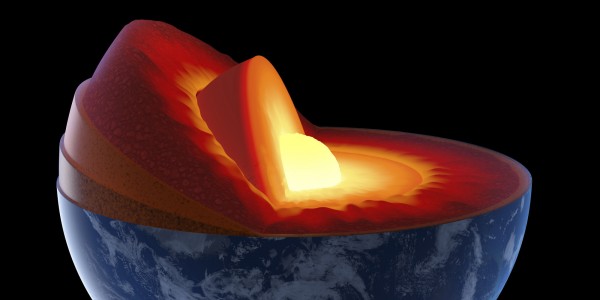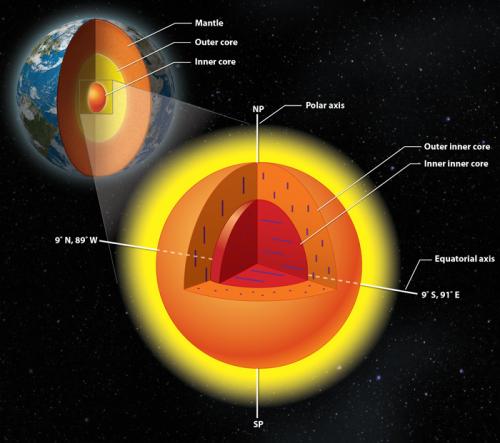
Researchers at the University of Illinois and colleagues at Nanjing University in China have found that an inner core to the inner core of the Earth. This mysterious inner-inner core – revealed by a novel application of earthquake-reading technology – was announced this week (February 9, 2015). It’s smaller than the moon, researchers say. Its unique properties might hold the key to how our planet evolved.
University of Illinois professor of geology Xiaodong Song and visiting postdoctoral researcher Tao Wang conducted the research, who results are available online in the journal Nature Geoscience.
Researchers use seismic waves from earthquakes to scan below the planet’s surface, much like doctors use ultrasound to see inside patients. The team used a technology that gathers data not from the initial shock of an earthquake, but from the waves that resonate in the earthquake’s aftermath. The earthquake is like a hammer striking a bell; much like a listener hears the clear tone that resonates after the bell strike, seismic sensors collect a coherent signal in the earthquake’s coda. Song said:
It turns out the coherent signal enhanced by the technology is clearer than the ring itself.
The basic idea of the method has been around for a while, and people have used it for other kinds of studies near the surface. But we are looking all the way through the center of the Earth.
Enjoying EarthSky so far? Sign up for our free daily newsletter today!

These researchers found that Earth’s inner core, once thought to be a solid ball of iron, has some complex structural properties. The team found a distinct inner-inner core, about half the diameter of the whole inner core. The iron crystals in the outer layer of the inner core are aligned directionally, north-south. However, in the inner-inner core, the iron crystals point roughly east-west (see graphic above).
Not only are the iron crystals in the inner-inner core aligned differently, they behave differently from their counterparts in the outer-inner core. This means that the inner-inner core could be made of a different type of crystal, or a different phase. Song explained:
The fact that we have two regions that are distinctly different may tell us something about how the inner core has been evolving. For example, over the history of the Earth, the inner core might have had a very dramatic change in its deformation regime. It might hold the key to how the planet has evolved. We are right in the center – literally, the center of the Earth.
Bottom line: Researchers in China and the U.S. have found that Earth’s inner core has an inner core of its own. The inner-inner core is about half the size of the entire core, or smaller than the moon.











